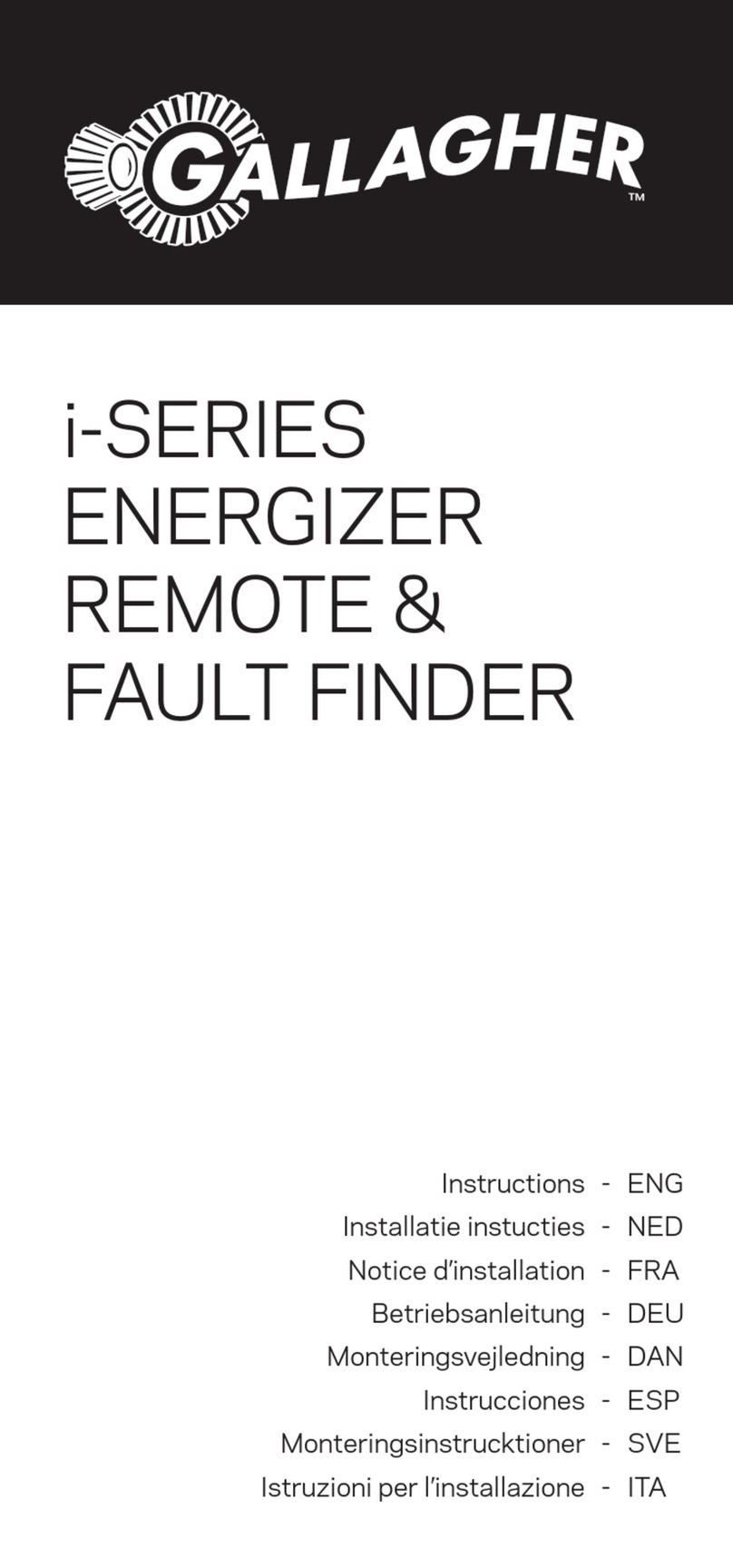
8
Handige Tip:Om onnodig baerij verbruik re voorkomen,
leg uw Fault Finder niet op of in de buurt van het
schrikdraadapparaat of de elektrische afrastering.
Vergelijk uw elektrische afrastering met een
waterleidingsysteem.
Afrasteringsvoltage = Waterdruk
Elektrische stroom = Hoeveelheid water/ StroomrichƟng
Een perfect funconerende elektrische afrastering kan
vergeleken worden met een waterleiding. Een waterleiding
heeaan de ene kant een waterpomp (schrikdraadapparaat)
en een stop aan de andere kant. Er is sprake van een hoge
waterdruk (voltage) en een hoge doorstroomsnelheid, zonder
waterlekkage.
HOE WERKT UW ELEKTRISCHE
AFRASTERING?
Wanneer een dier de afrastering aanraakt, dan is er sprake
van een maximale schok omdat er totaal geen verlies van
voltage en stroom is.
Een normale, in de dagelijkse prakjk voorkomende
elektrische afrastering kan vergeleken worden met een
waterleiding met één of twee lekken. Hoewel een geringe
hoeveelheid water (stroom) door deze lekken zal weglopen
waardoor de totale druk (voltage) op punt B vermindert,
zal de druk nog steeds groot genoeg zijn om de benodigde
hoeveelheid water (stroom) op punt B af te leveren.
Wanneer een dier de afrastering aanraakt, dan is er nog
steeds voldoende voltage en stroom aanwezig voor een
effeceve schok.
Een elektrische afrastering met een aanzienlijk stroomverlies
op het afrasteringsdraad kan vergeleken worden met een
waterleiding met een groot lek /gat. Als gevolg daarvan ziet
u dat er een aanzienlijke hoeveelheid water (stroom) via het
lek wegstroomt. Aangezien het meeste water weglekt, zal er
weinig water (stroom) punt B weten te bereiken.
Als een dier de afrastering aanraakt bij punt B, is er
onvoldoende spanning (volt) om een effeceve schok af te
geven.





























